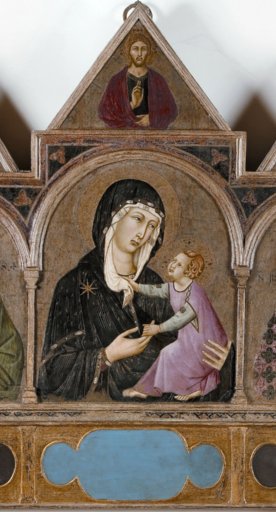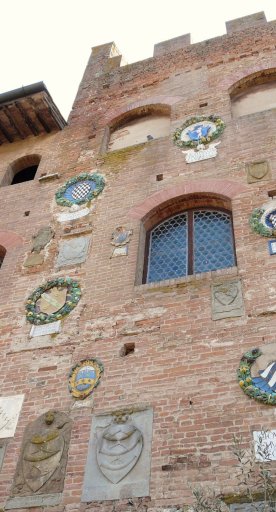Augustinian Convent in Certaldo
Amid sacred art, history and spirituality: an immersion in the medieval heart of Certaldo through the Augustinian Complex, custodian of the memory of Blessed Giulia and Giovanni Boccaccio
The Augustinian Convent of Certaldo is located within the medieval village of Certaldo Alto and encompasses the Church of Santi Jacopo e Saint Filippo, erected in the 12ᵗʰ century, which safeguards the remains of Blessed Giulia della Rena and the cenotaph of Giovanni Boccaccio. The Church, overlooking a quaint piazza that was once the convent cemetery, was entrusted to the Augustinians prior to 1422, who helped spread the worship of the blessed and played an influential role in the area. The two-story Romanesque cloister has an irregular trapezoidal shape and brick columns with stone capitals that create an original effect of perspective. From here, you enter the evocative cell of Blessed Giulia, who lived as a recluse for 30 years, devoted to prayer, in solitude until her death in 1367. Beatified by Pius VII in 1819, she is still venerated as the Patron Saint of Certaldo.
The Museum of Sacred Art, opened in 2001, exhibits works and objects from churches in the area, counting paintings by Ugolino di Nerio, Puccio di Simone, Cenni di Francesco, Ridolfo del Ghirlandaio and works associated with Poccetti and his school, two 13ᵗʰ-century Madonnas attributed to the Master of Bigallo and Meliore di Jacopo, a 14ᵗʰ-century triptych, as well as wooden crucifixes, Renaissance liturgical vestments and sacred jewelry. Of note are the 1496 chalice, the 13ᵗʰ-century thurible, a pax board attributed to Filarete and a series of gilded copper astylar crosses dating from the 13ᵗʰ century.
In particular, the Sala della Compagnia houses a Madonna and Child with Saints attributed to Gabriele Grassi, wooden statues of the Augustinian Saint Nicholas of Tolentino and Saint John of Sahagún, along with a 19ᵗʰ-century group dedicated to Blessed Giulia sculpted by Antonio Rossi. The Linari Collection, rather, donated in 2014 by Aloma Bardi and Gabriele Boccaccini, includes 17ᵗʰ-century Spanish portraits and a canvas by Ciro Ferri, originally safeguarded in Girolamo Mancini’s 19ᵗʰ-century villa in Linari.



